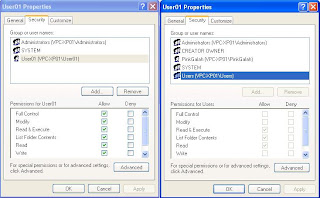A tractrt brought me this typical result:
Tracing route to www.translink.com.au [202.58.101.51]
over a maximum of 30 hops:
1 2 ms 1 ms 1 ms 192-168-1-1.tpgi.com.au [192.168.1.1]
2 24 ms 24 ms 24 ms 10.20.21.36
3 24 ms 24 ms 24 ms 202-7-165-1.tpgi.com.au [202.7.165.1]
4 25 ms 24 ms 24 ms bri-sot-wic-crt2-po1.tpgi.com.au [202.7.171.41]
5 41 ms 42 ms 41 ms syd-sot-ken-crt1-TG-7-0-0.tpgi.com.au [202.7.171.125]
6 42 ms 41 ms 41 ms 202-7-162-246.tpgi.com.au [202.7.162.246]
7 59 ms 59 ms 59 ms 149.59.194.203.static.comindico.com.au [203.194.59.149]
8 59 ms 59 ms 59 ms 149.59.194.203.static.comindico.com.au [203.194.59.149]
9 * * * Request timed out.
10 * * * Request timed out.
11 * * * Request timed out.
12 * * * Request timed out.
13 * * * Request timed out.
14 * * * Request timed out.
15 * * * Request timed out.
16 * * * Request timed out.
17 * * * Request timed out.
18 * * * Request timed out.
19 * * * Request timed out.
20 * * * Request timed out.
21 * * * Request timed out.
22 * * * Request timed out.
23 * * * Request timed out.
24 * * * Request timed out.
25 * * * Request timed out.
26 * * * Request timed out.
27 * * * Request timed out.
28 * * * Request timed out.
29 * * * Request timed out.
30 * * * Request timed out.
Trace complete.
Initially I thought the site might have been down but asking several friends to test reach this site told me the site was up and running. While some using the same ISP as mine, TPG, met with the same fate. A search on the Internet resulted in a thread in a broadband forum discussing this very issue for users on TPG, my ISP, meeting the same fate.
My fate apparently is the result of me, by virtue of my IP address, being a bogon. It is no joy because essentially I cannot do anything as I do not control the IP address allocation. Furthermore, when things like this happening, there is no one-stop shop where you can go to get help and no one authority having the power to arbitrate. The ISP giving me the IP address is not really responsible for my fate; I guess in some way they are responsible for allocating a bogon IP to me. The destination party may be slow to the bogon's classification update announcement to correct the filtering problem resulting my mis-classification. That party may not even understand or aware that they are doing bogon filter using outdated data. Have you ever tried to discuss this kind of technical details on a site's feedback page, if one exists?
This site is of great importance to me as I routinely perform legitimate e-commerce transactions on it to top up my transport stored value smart card. Failure to access this will mean that I have to top up by queuing up at top up stations denying me the convenience e-commerce brings.
Thankfully at the moment, I have two ways to reach this site beating the alleged bogon classification. One is to use a proxy server like http://freeproxyserver.net. The other technique is to use a Tor Browser, which is my preferred way to access this site.
Just to prove that there is nothing wrong with my internet connection and router settings, here is a screen shot showing the successful connection to Translink, showing on the left using Tor Browser, and the failure screen via direct connection using my ISP allocated IP address, shown on the right. The two browsers are running simultaneously.
When using IE8, the message return is that it cannot display the page like this:
Perhaps there is another explanation other than me being a bogon! Checking my IP address against a list of Blacklist Servers using whatismyipaddress.com tells me that I am not blacklisted. So is the reason?
At the moment I am in limbo with two lifelines at the mercy of the Internet magic! If you are contemplating of implementing bogon filtering, be prepared to do frequent update as IP ranges go in and out of the bogon range. Failure will cause unwittingly innocent victims, like me, great problem. Think hard before you use bogon filter.






